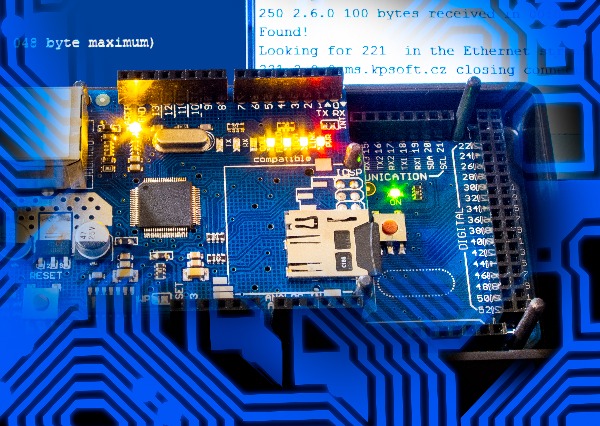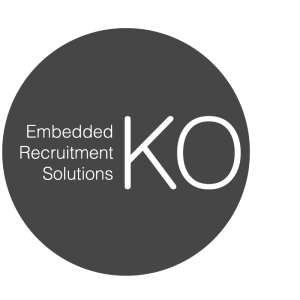C is one of the most popular and widely used programming languages by developers across a wide range of industries, with applications in all kinds of projects from operating system development to embedded software. But whilst C is sometimes used by programmers working with embedded systems, an extension of the language has been specifically designed to provide optimised efficiency and function, called embedded C.
Embedded C is essentially an extension of the C programming language, so it’s understandable why the two often get confused. In this article, we’re going to be exploring the difference between C and embedded C to better understand what makes each unique, and then discuss which language is better suited for different kinds of projects.
What is C Programming?
C is a classic general-purpose programming language that was created in the 1970s at Bell Labs. It’s a low-level, procedural coding language that is used in a wide range of projects, including game development, creating system or application software and designing desktop programs.
C programming is considered to be quite straightforward due to the language’s simple syntax, and its structured nature also means that modifying and maintaining code is simple. It’s been used for developing embedded software for a while thanks to being low-level and very efficient.

Advantages of C
Here are some of the key advantages of programming in C.
- Simple keywords and an easy-to-understand syntax
- C is a portable language, so can be used across different operating systems
- Testing and debugging in C is generally considered to be quite straightforward
- C is well-suited to handling complex graphics and sound
- Execution speed and memory usage are both very efficient
- The low-level features of C make it a very flexible language
- C is an established programming language, so the community of support is good
Disadvantages of C
On the flip side, here are some disadvantages of using C as a programming language.
- Object-oriented programming is not possible in C, which is why C++ was developed
- C isn’t that beginner-friendly, as it requires a complex understanding of memory management and hardware
- There’s no strict type checking
- Some important high-level features are missing, such as garbage collection
- The direct manipulation of memory through pointers means that C software can be more vulnerable to security issues
What is Embedded C Programming?
Embedded C is an extension of the C programming language that was created specifically for software that is used in embedded systems. Its syntax and semantics are typical of C programming languages but it uses several additional features that cater specifically towards embedded systems functionality.
Embedded C programming is often used by developers who are familiar with C as a coding language but need to create a program or application that is tailored to the needs of an embedded system. It’s one of the best languages for embedded systems because it has been designed specifically for this kind of technology.

Advantages of Embedded C
Here are some of the key advantages of using embedded C.
- Embedded C is a very efficient language, which is essential for embedded software where resources are limited
- Code can be reused, which makes programming a quicker process
- Like with C, code written in embedded C is portable across different operating systems
- Being low-level means that embedded C code offers very precise control over hardware
- Features of embedded C code make it ideal for real-time applications
Disadvantages of Embedded C
Whilst embedded C is tailored to embedded software it does have some disadvantages for programmers.
- You have to already be familiar with C as a programming language to understand how to write software in embedded C
- There’s no standardisation of embedded C
- Common high-level features you’ll find in other programming languages are not present in embedded C
- Vulnerabilities related to memory management are more likely
- Scaling code in embedded C is difficult and time-consuming
What is the Difference Between C and Embedded C?
Perhaps the biggest and most defining difference between C and embedded C is that the former was designed as a general programming language, whilst the latter was specifically created to be used for developing embedded software. But there is also a range of other defining differences on the topic of C vs embedded C, which we’ll explain below.
Hardware Dependency
Hardware dependency refers to whether a piece of software has been designed for a specific type of hardware, and is one of the key ways in which C and embedded C differ from each other. Embedded C is a fully hardware-dependent programming language, whilst C is hardware-independent and doesn’t need a specific compiler or operating system to run on.

Scalability
Scalability is a key consideration when it comes to choosing a programming language, as being able to easily expand and develop an existing piece of software can be a massive time-saver for developers. Whilst C is a programming language that is quite easily scalable, making it easy to add new lines of code without impacting the performance, embedded C is not very scalable because it has limited memory and processing power.
Programming Style
C’s programming style is based on general-purpose software development, whilst embedded C programming is much more focused on embedded software. This means that additional keywords and features are part of the programming style for embedded C that you won’t see in general C code.
Another aspect of programming style that is a difference between C and embedded C is the formatting style. Programs written in C can have a free format where the developer has more choice in how they want the code to be formatted. But because embedded C software is hardware-dependent, it has to be written in a more structured style depending on the microprocessor that is being used in the embedded device.
Memory Usage
In comparison to the computers that most software runs on, embedded systems have quite limited memory available. Therefore, another difference in embedded C vs C programming is that software written in embedded C has to use memory very efficiently so as not to overwhelm the device or impact its performance. C software on the other hand is designed with large amounts of processing power in mind.
Processing Power
Leading on from that last point, another important difference between C and embedded C programming is that the processing power of embedded devices is always much more limited than that of larger computers that general software runs on. Therefore, embedded C code differs from code written in C because it is designed to be more efficient whilst using less power.

Standard Libraries
As we’ve already covered, there’s a much wider range of applications for C programming than there is for embedded C. Therefore, the size of the standard libraries available for C software is much larger, giving you a lot more options that can complete a wide range of tasks. In comparison, the standard library for embedded C is quite limited and only gives you essential functions.
Interrupt Handling
Interrupt handling is a function of real-time software, which embedded systems often use as part of their function. Embedded C programming includes features that are designed for interrupt handling, whereas if you are trying to do embedded programming in C, you’ll have to manually write custom code to handle interrupts.
Compilers
When you’re looking at compilers for C vs embedded C, there are a lot more compatible compilers to use for software written in C. Embedded C software compilers are only available for particular platforms which limits the number of platforms that embedded C programs can be run on, relating to the fact that this kind of embedded software is device-specific. The files generated by embedded C compilers are hardware-specific, whilst the output of a general C compiler is much more versatile.
Bug Fixing
The difference between C and embedded C is related to the programmer’s experience rather than the code itself, but it’s generally considered to be much harder to fix bugs in embedded C code than it is for code written in C. This is potentially because embedded C is a much more specific and therefore more complex programming language, so editing it and highlighting the causes of error requires more knowledge and familiarity with the language.
When to Use C and Embedded C
Now that we’ve discussed the main differences between C and embedded C, the final topic of this blog post is about when to use C for programming and when to use embedded C instead. The good thing about choosing between these two programming languages is that the tasks they were each designed for make it easier to assess the projects they are better suited for.
The embedded C programming language was designed specifically with embedded systems software in mind. Therefore, if the project or task you’re working on involves an embedded system, embedded C is an excellent choice that will make the whole development process much better.
Of course, other programming languages are also tailored for embedded software development. If you’re unfamiliar with C as a language then trying to learn embedded C for a project might be a time-consuming challenge, so bear this in mind if you’re trying to choose the best programming language for an embedded software project.
If you’re programming systems or applications that require complex software, C is a much better choice. As a general-purpose language, C has a much broader set of potential applications and so is better suited to operating systems, database management systems and 3D film development. If you’re developing an application for a general-purpose computer or any device or machine that requires a large amount of processing power, then C is much better equipped to handle this.
To summarise, embedded C is best suited to developing low-level firmware and applications that are optimised to run on limited memory and processing power, which is why it’s so perfect for embedded systems. C is the better programming to use when you’re working on larger projects involving more complex software, although it can also be used to create embedded software.

Summary
Using C programming for embedded systems is an approach that is successful for many developers, but with the creation of embedded C came a specific programming language option that was designed to help create the best possible embedded software and firmware. If you’re a software developer or engineer who works with embedded systems and devices, understanding the difference between the two languages and what they can both be used for can help to make sure that you’re using the right approach in embedded software projects.
If you’re an embedded software developer or embedded systems engineer looking for your next job opportunity, KO2 is a specialist recruitment agency that can help. Take a look at our current embedded software engineering roles or get in touch to speak to the team about what you’re looking for.







